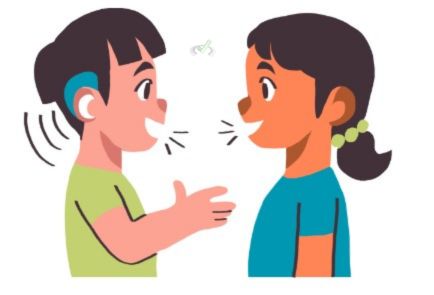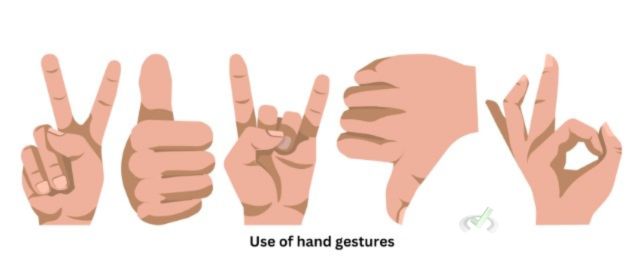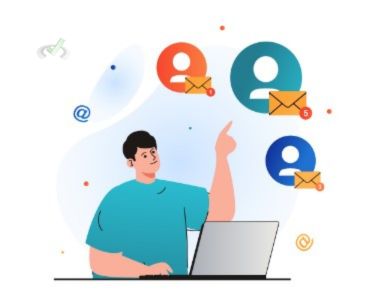Communication is crucial in socialization. It helps individuals learn and adopt society's norms, values, and behaviors. Understanding how communication influences socialization can help us better navigate social interactions and develop strong relationships.
I. Understanding Communication in Socialization
Communication is sharing information, thoughts, and feelings between people. It is essential for socialization, which is how individuals learn and internalize the rules and norms of their society.
Types of Communication
Different types of communication play a role in socialization, including verbal, non-verbal, and written communication.
- Verbal Communication: This includes speaking and listening. Parents teach children how to speak and interact with others through conversations and storytelling. It helps pass on cultural values and language skills.

- Non-verbal Communication: This includes body language, facial expressions, and gestures. For instance, a smile can show friendliness, while crossed arms might indicate defensiveness. These cues can vary across cultures, which can sometimes lead to misinterpretations.

- Written Communication: This includes reading and writing. Reading books or instructions helps us learn new information and social norms. Written communication can vary in formality depending on the context, like emails versus text messages.

Importance of Communication
Communication is vital for socialization because it helps individuals:
- Learn Language: Language is the primary tool for communication and learning in any culture. It involves not just words but also cultural nuances.
- Understand Social Norms: Through communication, we learn what behaviors are acceptable in our society. For instance, saying "please" and "thank you" shows politeness.
- Build Relationships: Effective communication is critical to forming and maintaining relationships. Different communication styles can affect how relationships develop and sustain.
II. Communication and Socialization Agents
Socialization agents are the people, groups, and institutions that influence our socialization. Communication is central to the role of these agents.

Family
Family is the first and most important agent of socialization. Through communication within the family, children learn language, values, and norms.
For example, parents teach children how to speak, behave, and interact with others. Family stories and traditions communicate cultural values. Family structures, such as single-parent or extended families, can influence these communication patterns.
School
Schools play a significant role in socialization by teaching not only academic skills but also social skills.
For instance, teachers use verbal and written communication to teach students how to behave, cooperate, and respect authority. The hidden curriculum, which includes the implicit lessons learned through school culture and interactions, also plays a role.
Peer Groups
Peer groups influence socialization by providing opportunities to develop social skills and form relationships.
For example, friends communicate with each other to share interests, solve problems, and navigate social situations. Peer pressure can significantly affect communication and behavior. It encourages conformity or resistance to group norms.
Media
Media is a powerful agent of socialization. These can shape our perceptions and behaviors through various forms of communication. For instance, television shows, movies, and social media platforms communicate societal norms and values.
This influences how we see the world. Different forms of media, such as news and entertainment, play distinct roles in socialization.
III. Effects of Communication on Socialization
Communication can have positive and negative effects on socialization.
Positive Effects
- Enhanced Learning: Good communication helps individuals learn new skills and information effectively. Clear instructions, for example, help students understand their tasks better.
- Strong Relationships: Clear and empathetic communication fosters strong relationships. Skills like active listening can strengthen bonds between friends and family members.
- Cultural Understanding: Exposure to different forms of communication can enhance cultural awareness and understanding. For instance, learning about other cultures through books or media can broaden one's perspective.
Negative Effects
- Miscommunication: Poor communication leads to misunderstandings and conflicts. For example, unclear messages can cause confusion and frustration.
- Negative Influences: Exposure to harmful or misleading information can negatively impact behavior and attitudes. Media literacy, or critically evaluating media content, is essential to mitigate these effects.
- Isolation: Lack of communication or poor communication skills can lead to social isolation. Technology can help and hinder communication, depending on how it is used.
IV. Improving Communication for Better Socialization
Improving communication skills can enhance socialization and help individuals build better relationships.
Active Listening
Active listening encompasses paying full attention to the speaker. It also involves understanding their message and responding thoughtfully.
For instance, nodding, maintaining eye contact, and asking clarifying questions show that you are engaged in the conversation. Active listening can prevent misunderstandings.
Empathy
Empathy is the ability to understand and share the feelings of others. It is crucial for effective communication. Acknowledging someone's feelings can help build trust and rapport, such as comforting an upset friend.
Clear and Concise Messaging
Communicating clearly and concisely helps avoid misunderstandings and ensures the message is understood. For instance, using simple and direct language can make communication more effective. Tips for clear communication include avoiding jargon and being specific about your message.
Non-verbal Communication Awareness
Being aware of non-verbal signals can enhance communication. For example, recognizing body language cues, such as crossed arms or lack of eye contact, helps you understand how someone feels. It's important to consider cultural differences in non-verbal communication.
V. Bridge/Overlap
The role of communication in socialization connects to other important areas in sociology and psychology.
Social Identity
Communication shapes our social identity by influencing how we see ourselves and others. For example, how we communicate with our peer group can affect how we perceive our social status and identity. Communication within different groups influences our self-concept.
Group Dynamics
Understanding communication helps explain group behavior and interactions. For instance, effective communication can lead to better group cooperation. Leadership and communication styles impact group dynamics and success.
Mental Health
Communication impacts mental health, as effective communication can reduce stress and enhance well-being. Thus, talking about your feelings with a friend or counselor can help alleviate anxiety and depression. Lack of communication contributes to mental health issues.
Cultural Competence
Learning to communicate across different cultures can enhance cultural competence and reduce misunderstandings. Hence, being aware of cultural differences in communication styles can improve interactions with people from diverse backgrounds. Cultural competence is important in global interactions.
Conflict Resolution
Communication is important in resolving disputes and conflicts. For example, using active listening and empathy in a disagreement can help find a mutually agreeable solution. Effective communication can de-escalate tensions and foster understanding.
Developmental Stages
Communication skills develop from childhood to adulthood. This influences socialization at different life stages.
For instance, children learn basic language skills. Meanwhile, teenagers develop more complex communication abilities. Adults refine these skills to navigate professional and personal relationships.
Digital Communication
The rise of digital media has transformed communication and socialization. An example is how social media platforms allow people to connect globally.
However, it can also lead to misunderstandings and miscommunications. Digital communication skills are essential in today's world.
VI. Wrap Up/Key Terms
Let’s summarize the key points:
- Communication: The process of sharing information, thoughts, and feelings.
- Verbal Communication: Speaking and listening to convey messages.
- Non-verbal Communication: Body language, facial expressions, and gestures.
- Written Communication: Reading and writing to share information.
- Socialization Agents: People, groups, and institutions that influence our socialization.
- Active Listening: Paying full attention and responding thoughtfully to others.
- Empathy: Understanding and sharing the feelings of others.
- Clear Messaging: Communicating simply and directly.
- Non-verbal Cues: Body language and other non-verbal signals that convey information.
- Conflict Resolution: Using communication to resolve disagreements.
- Cultural Competence: The ability to communicate effectively with people from different cultures.
- Digital Communication: Using technology to communicate and socialize.
VII. Practice
Test your understanding with these questions:
Sample Practice Question 1
What is the primary tool for communication and learning in any culture?
A. Non-verbal cues
B. Written communication
C. Language
D. Media
Ans. C
Language is the primary tool for communication and learning in any culture. It allows individuals to share information, thoughts, and feelings.
Sample Practice Question 2
Which of the following is an example of non-verbal communication?
A. Speaking
B. Listening
C. Writing
D. Facial expressions
Ans. D
Body language, facial expressions, and gestures are forms of non-verbal communication. These convey messages without words.







 To help you achieve your goal MCAT score, we take turns hosting these
To help you achieve your goal MCAT score, we take turns hosting these 





















 reviews on TrustPilot
reviews on TrustPilot